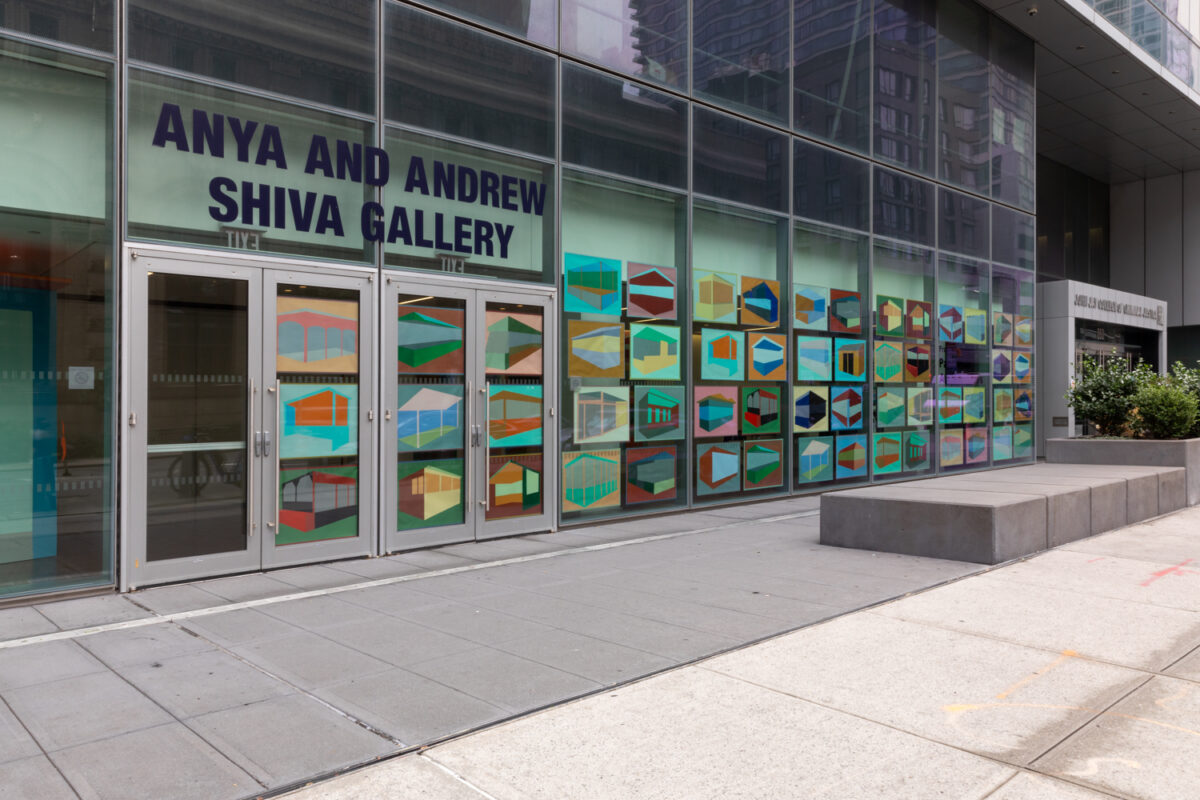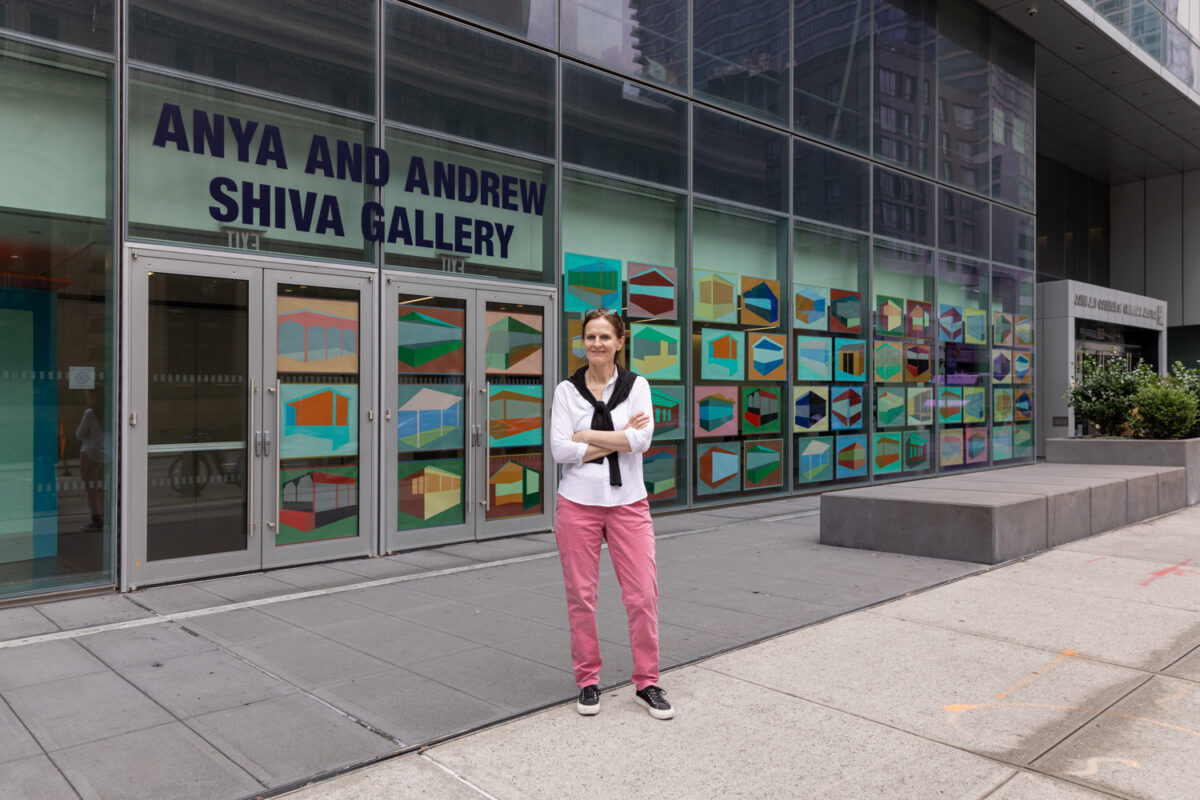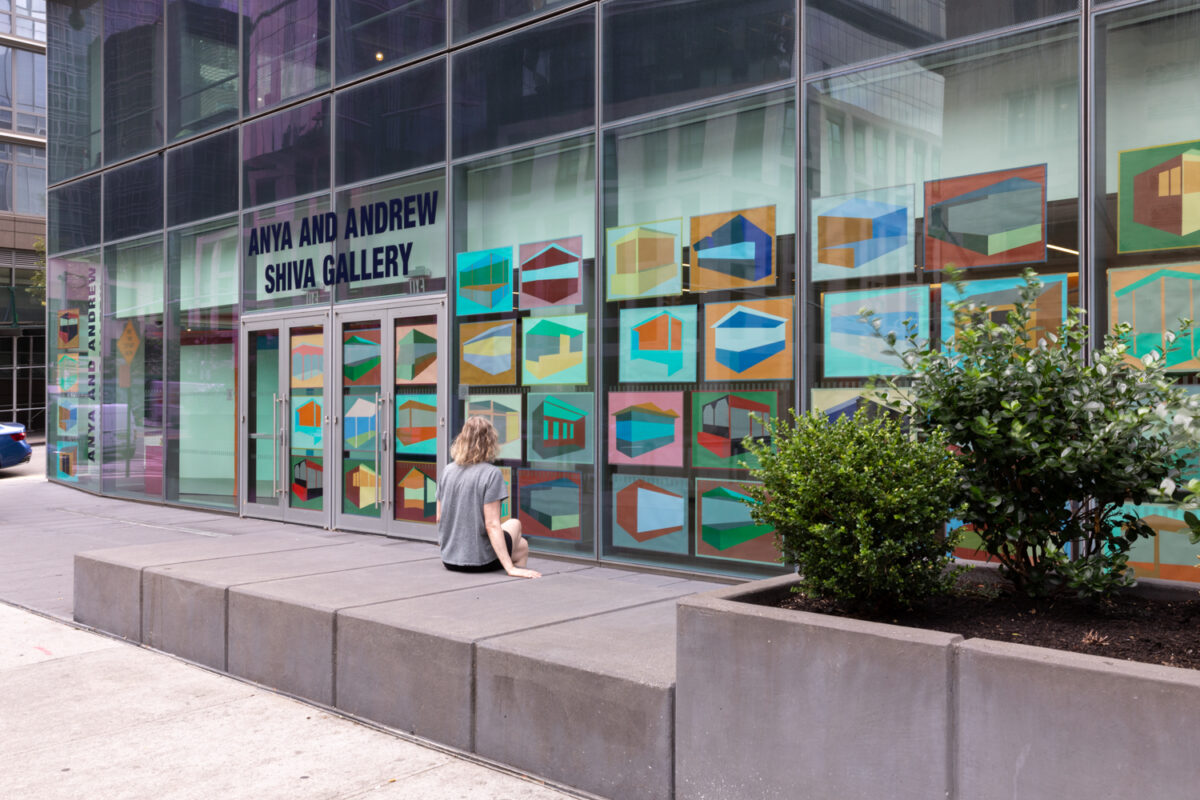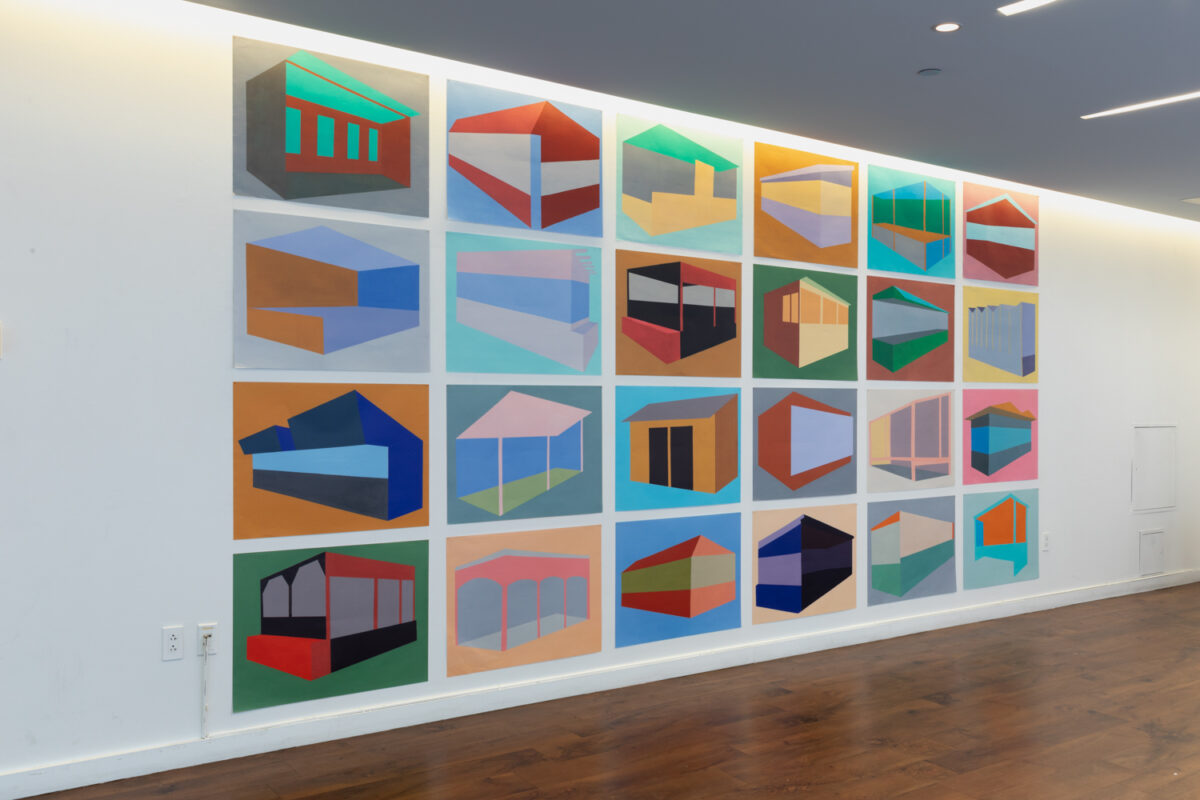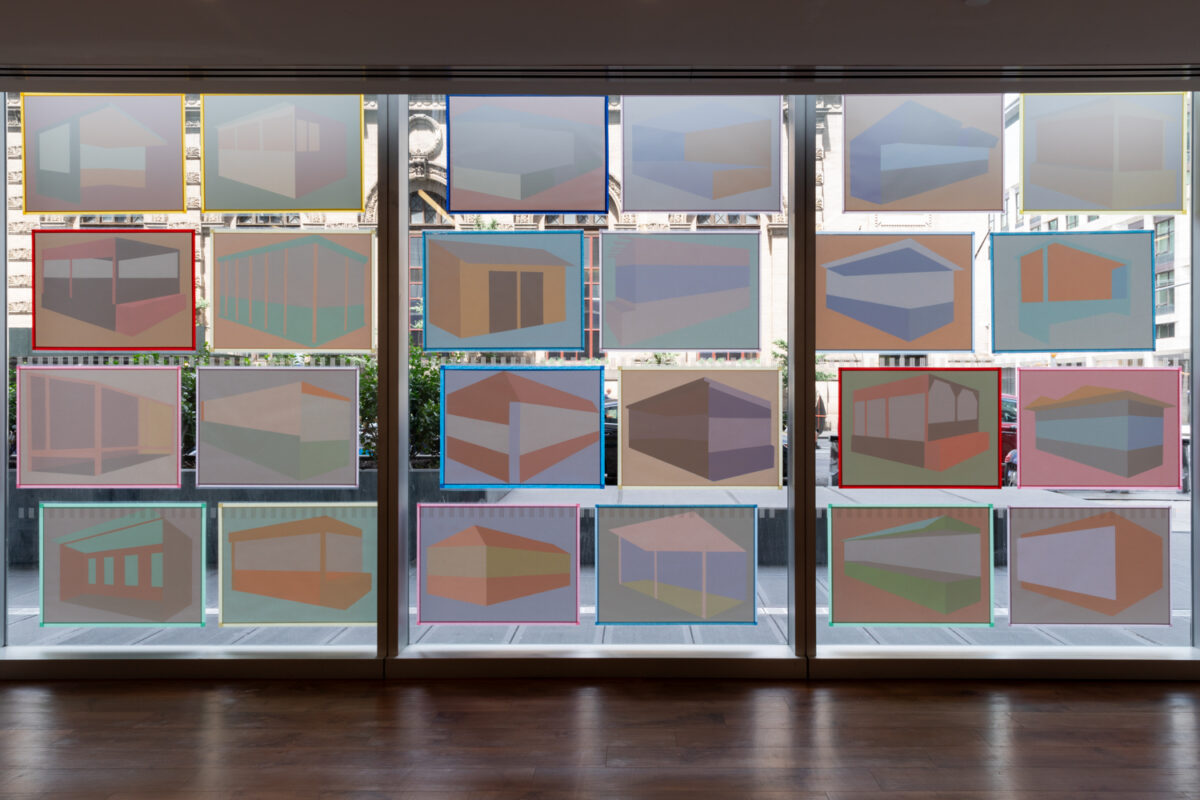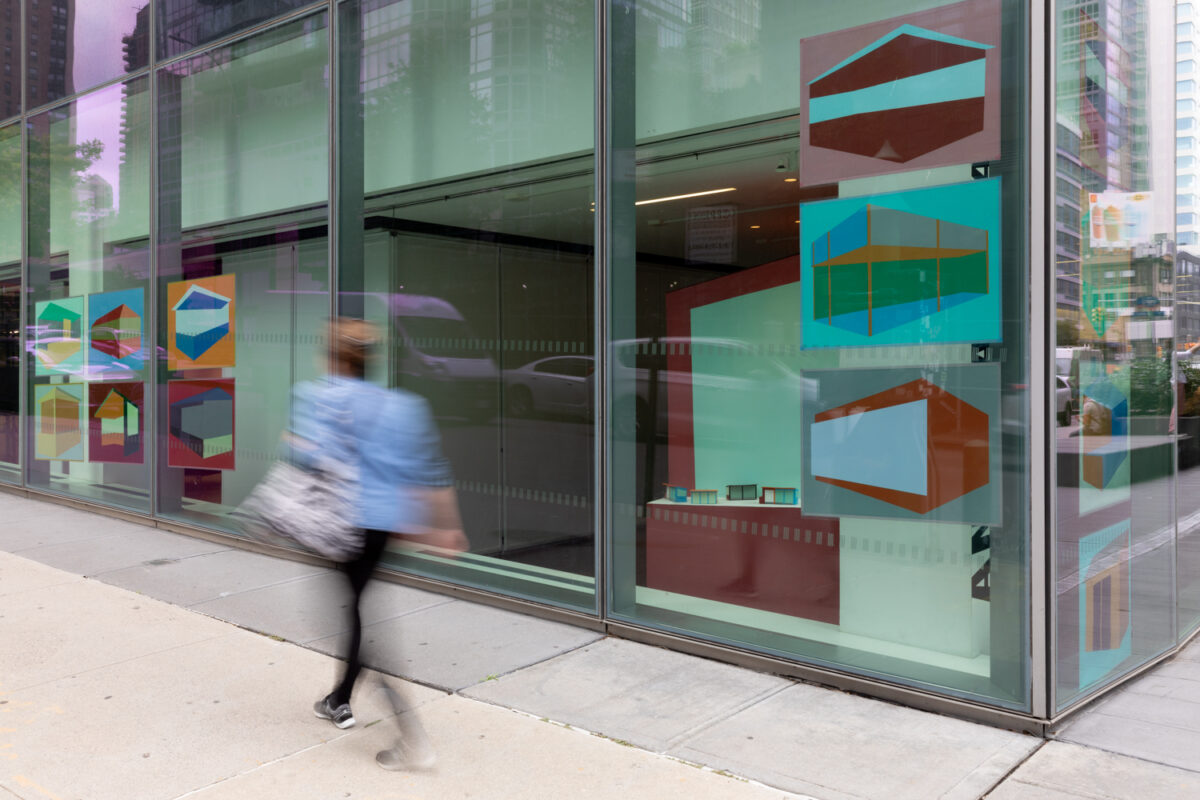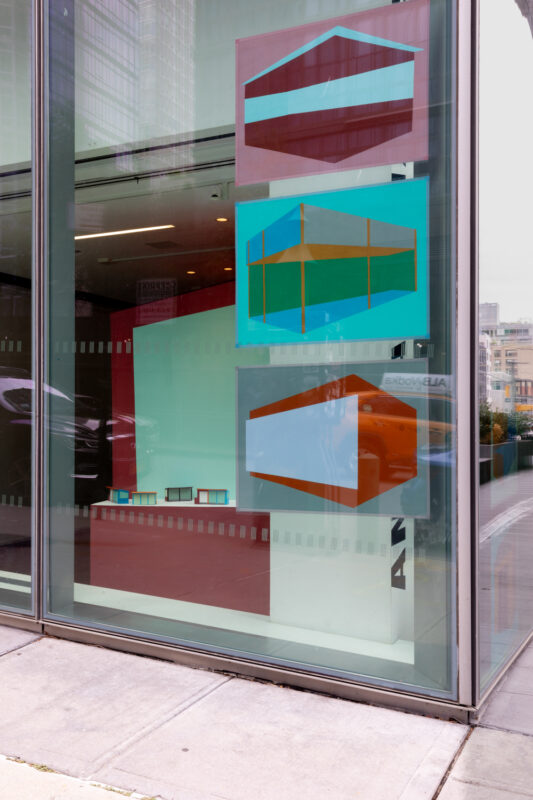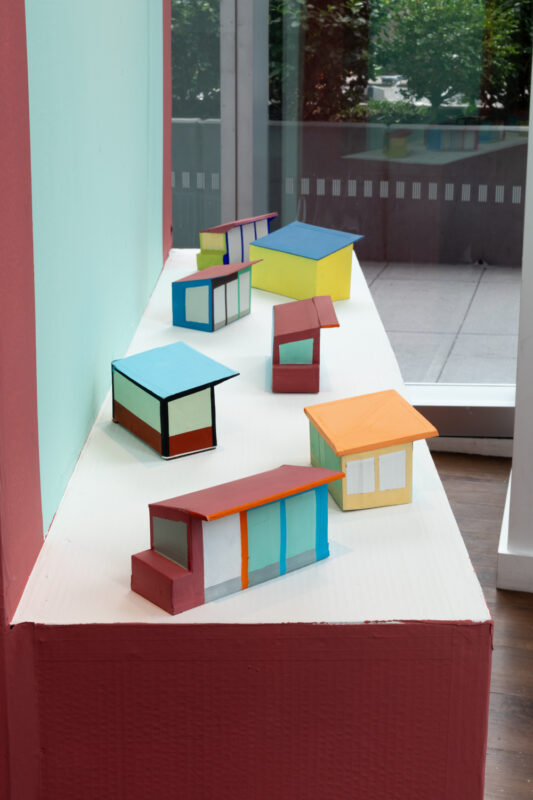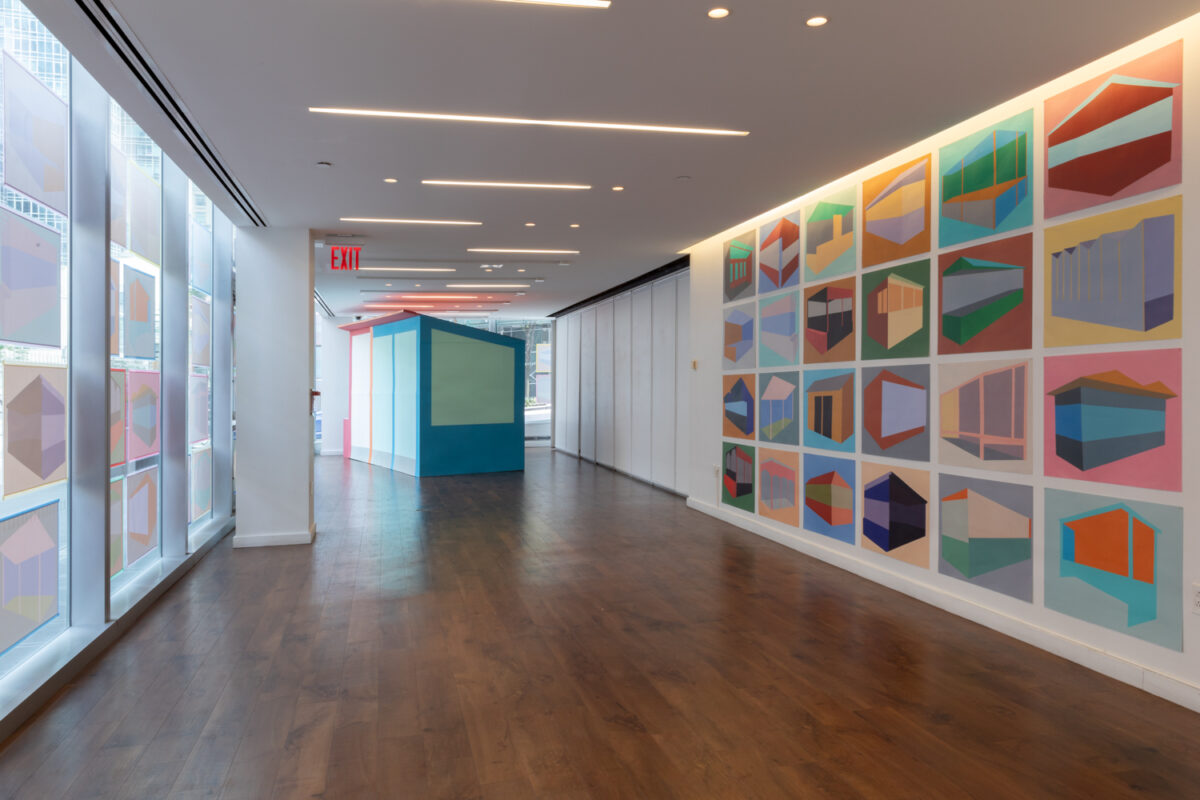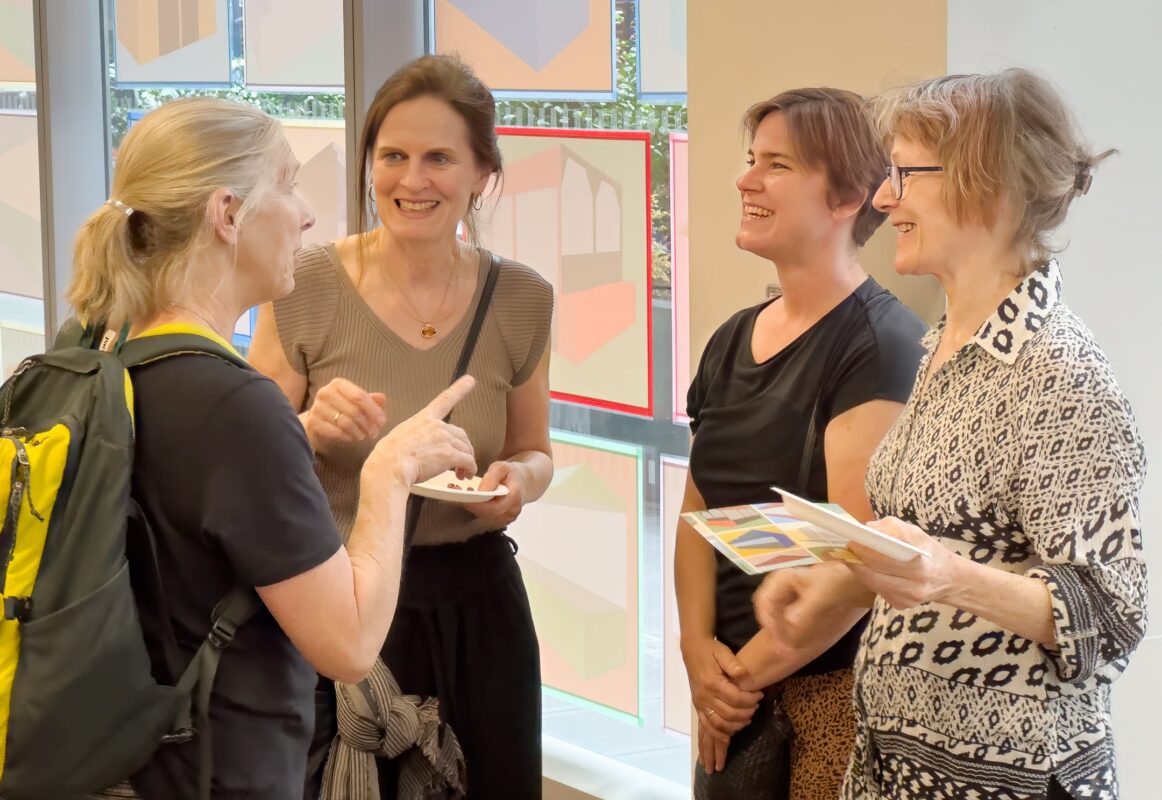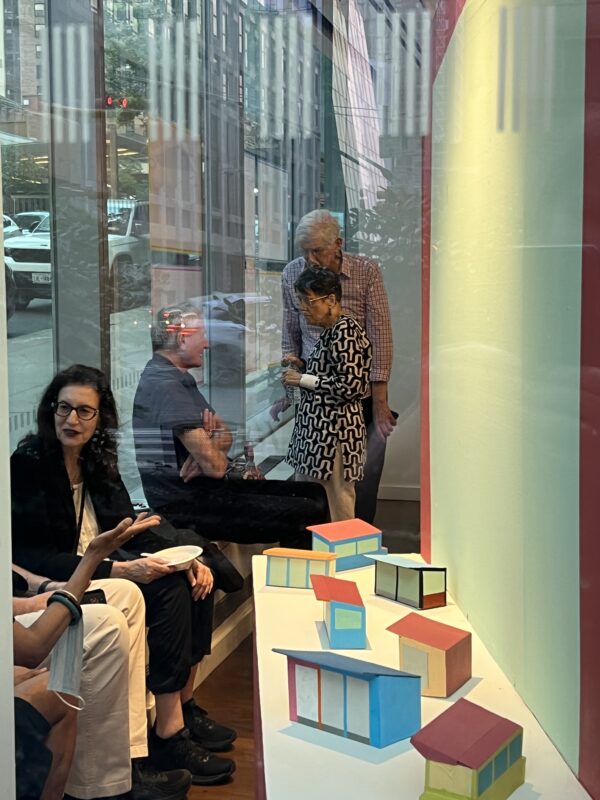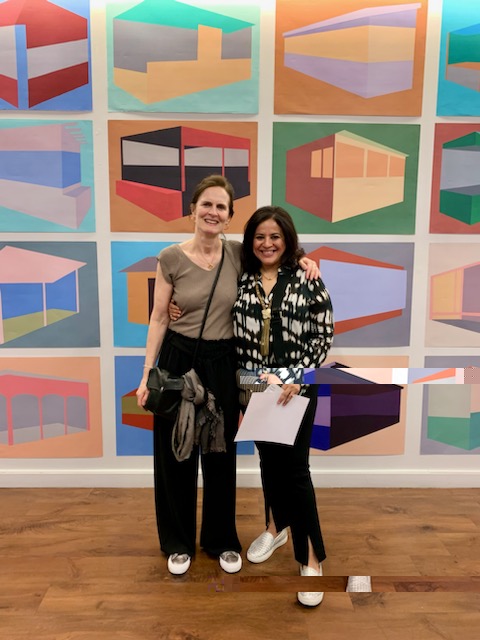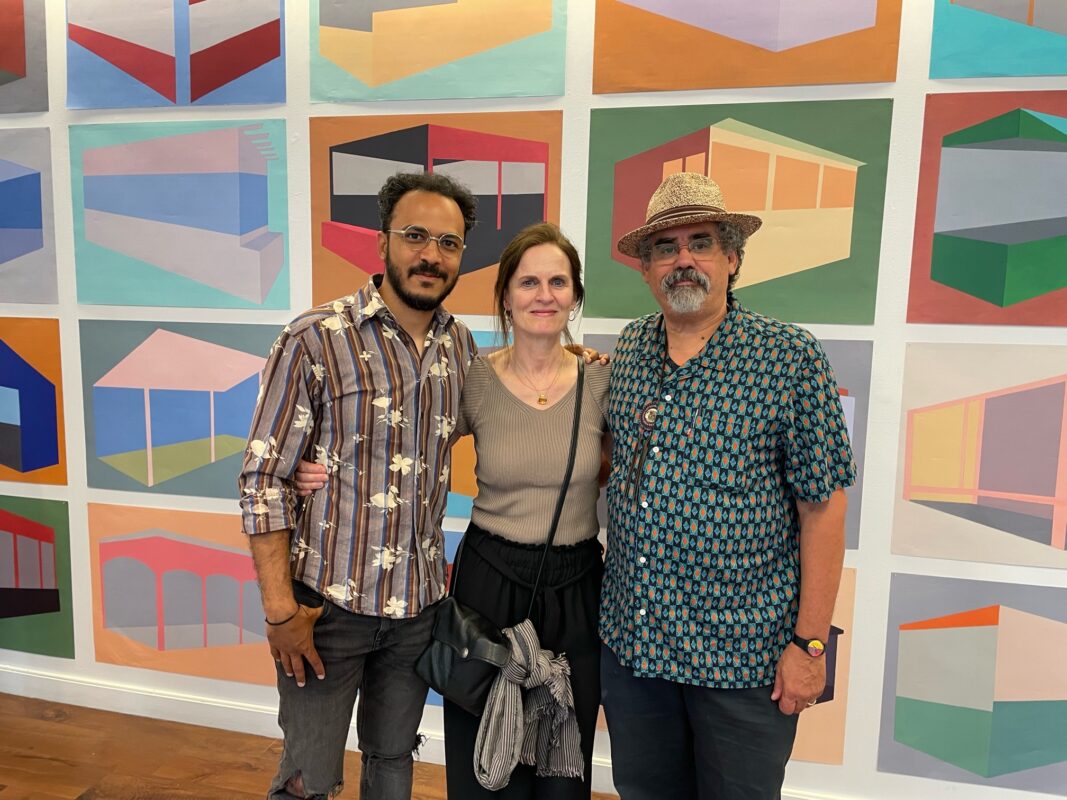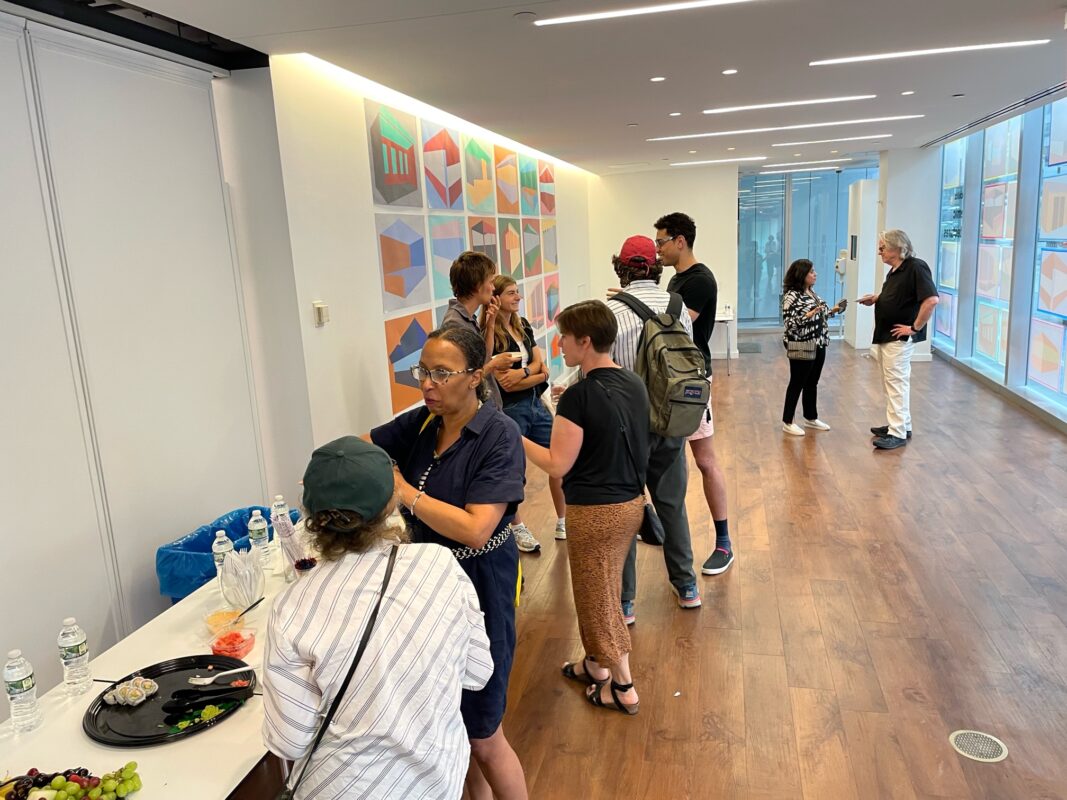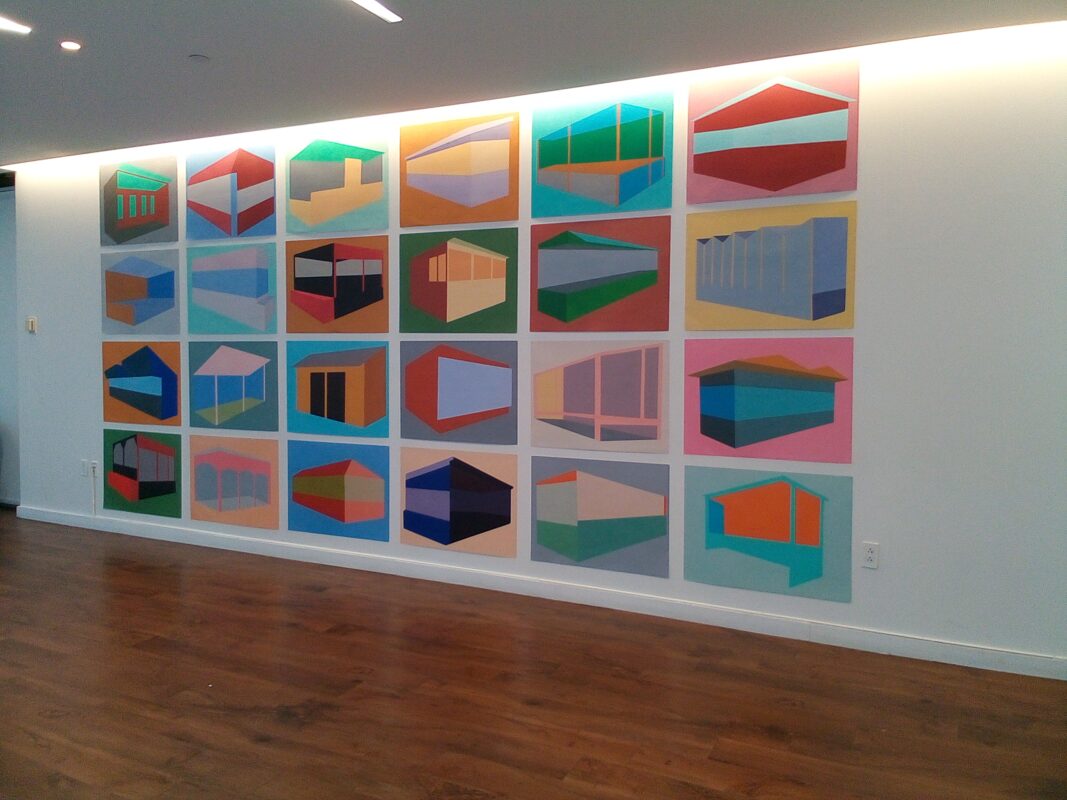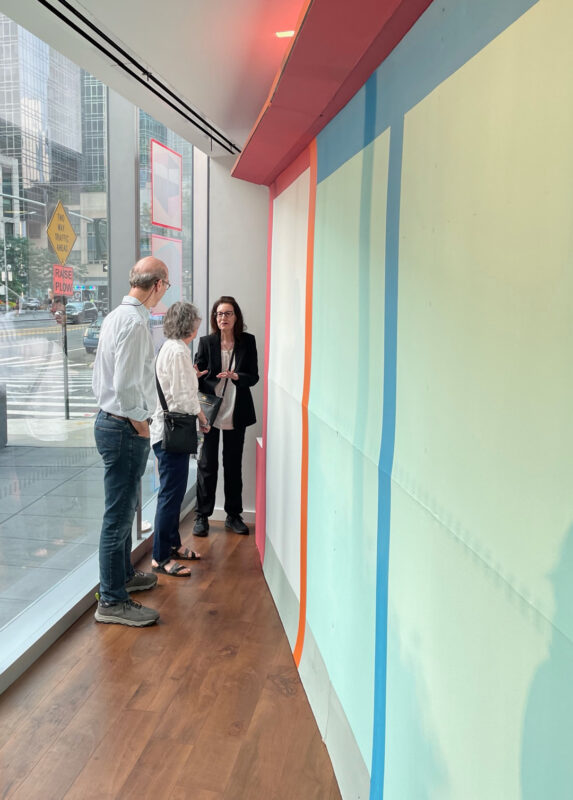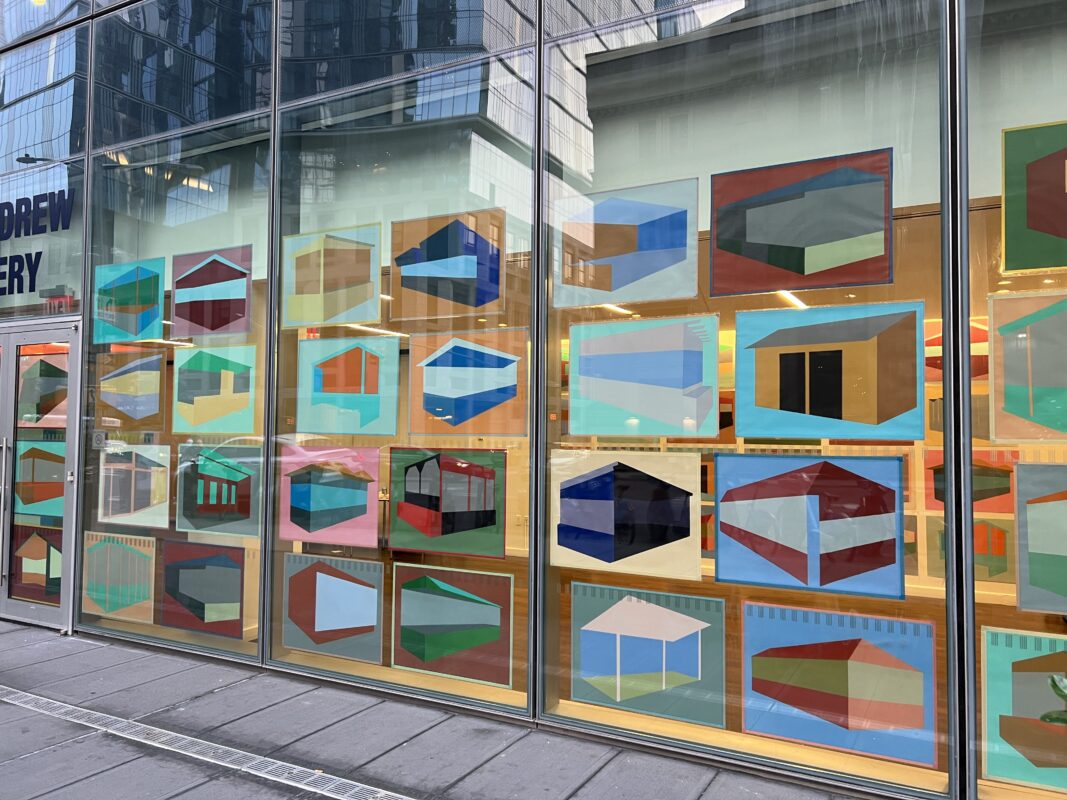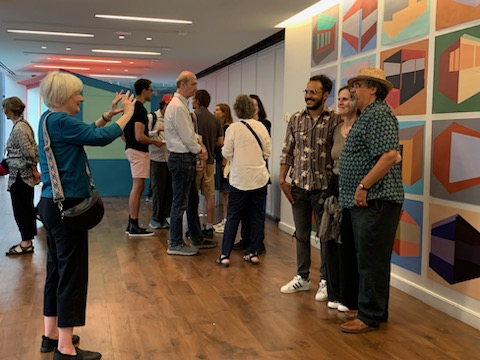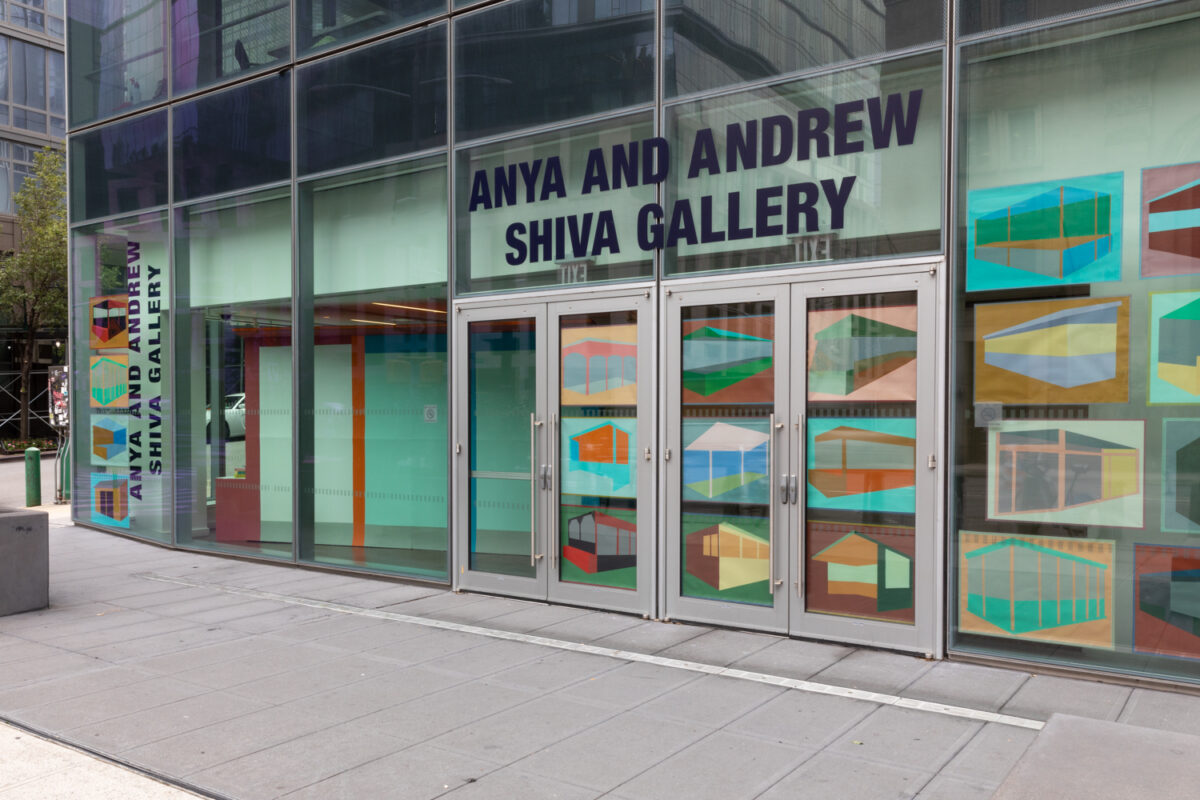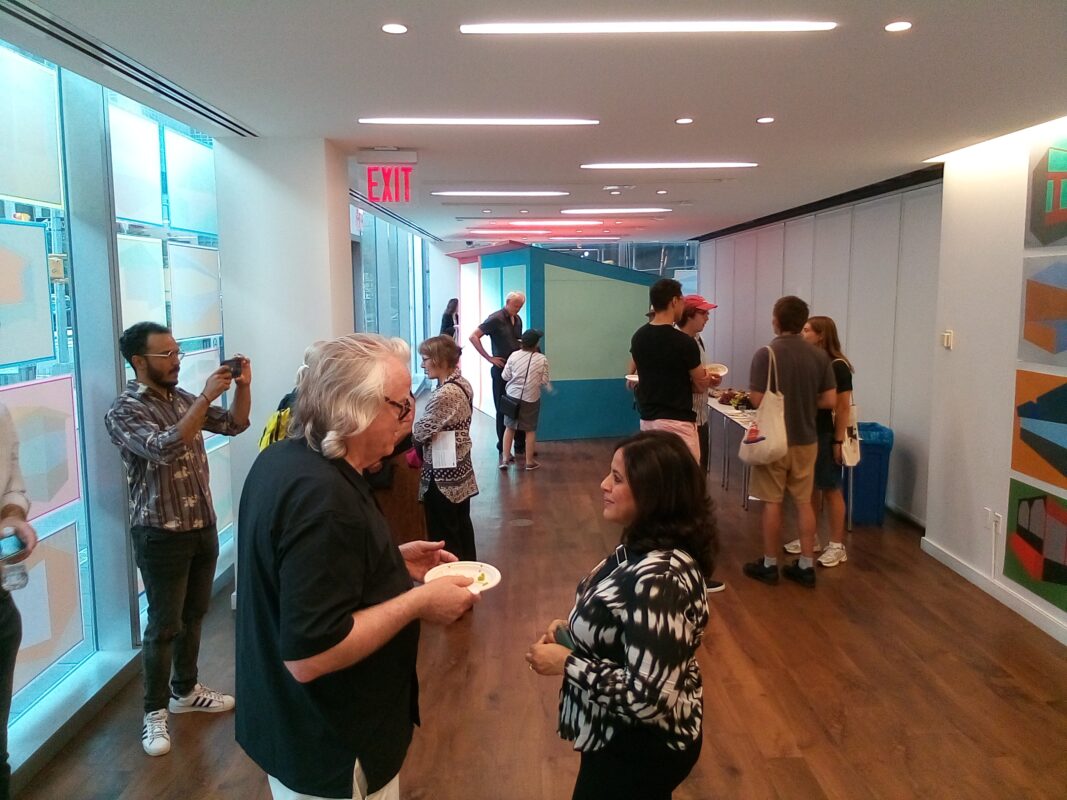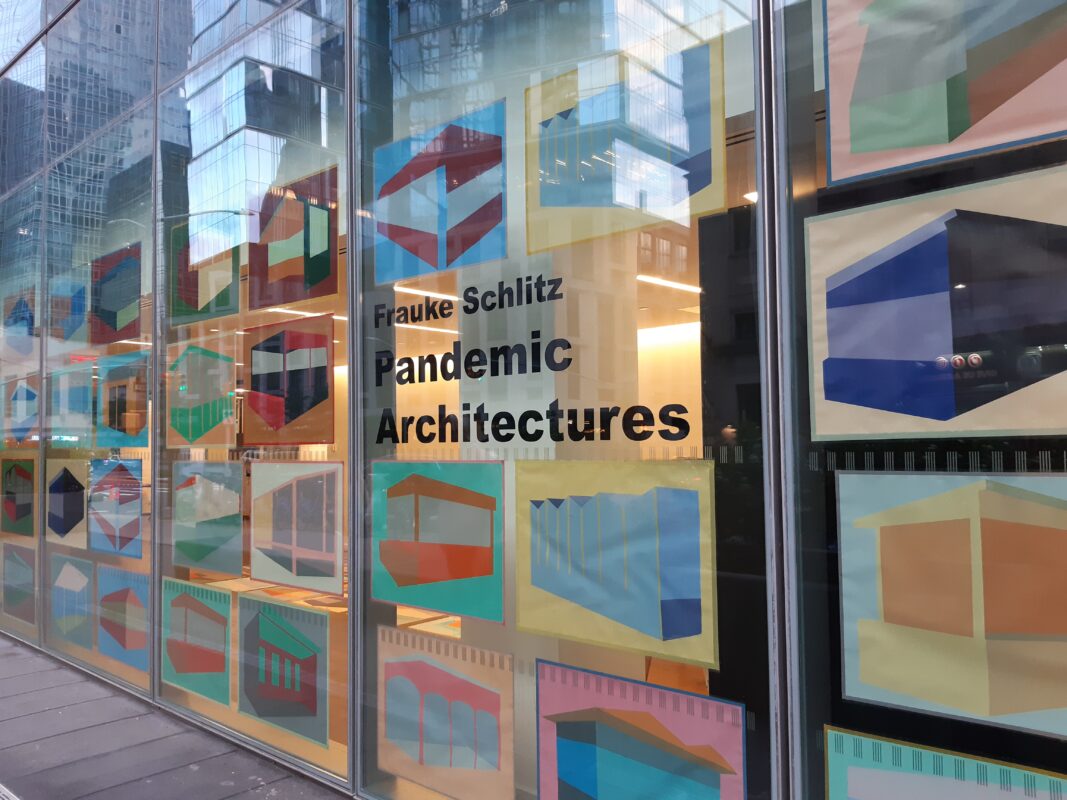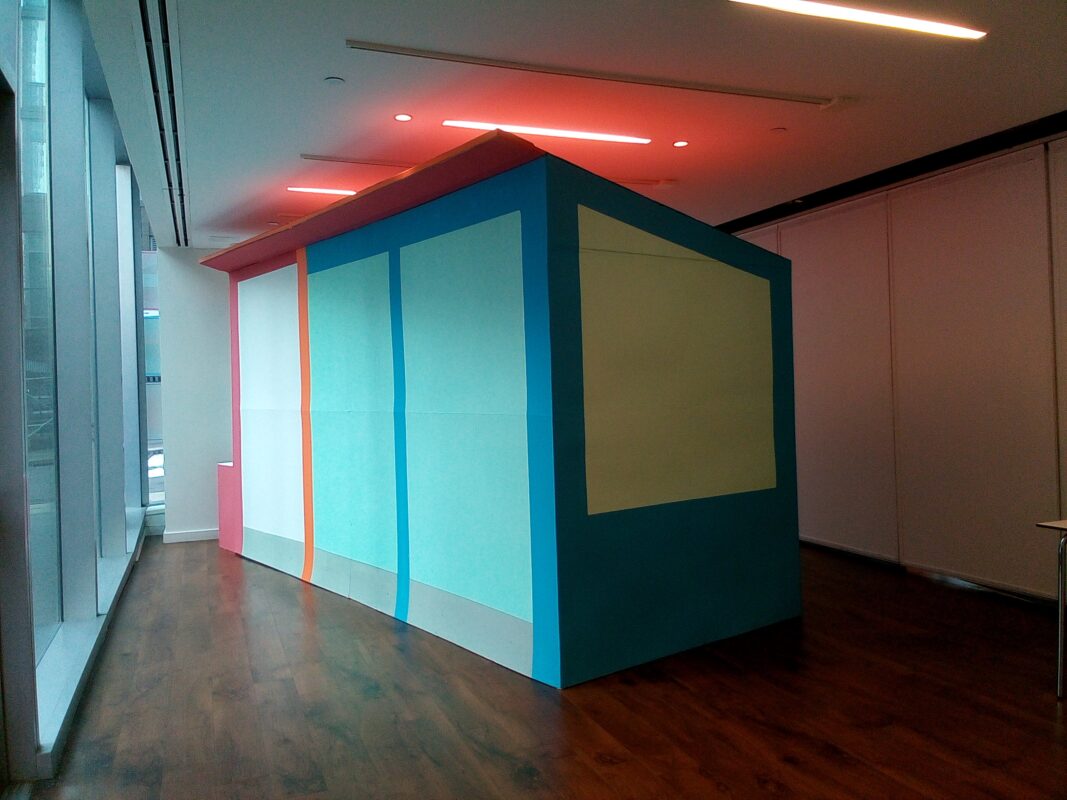Pandemic Architectures
June 29 – August 13, 2023
Opening Reception June 29, 6:00 – 8:00 PM
New York –
The German artist Frauke Schlitz has created a site-specific installation for the Anya and Andrew Shiva Gallery at John Jay College in Manhattan.
The city as an experiential space has become the focus of Frauke Schlitz’ work. Wandering through big cities makes her feel the connectedness of inner and outer states. In a city’s buildings, areas, and territories one experiences rhythm, tectonics, equilibrium, connection, and disruption in both an architectural and a social sense.
Schlitz returned to NYC in 2021 after the first year of the covid pandemic. She was intrigued by the outdoor dining sheds that had spread all over the city and how they contrast with the surrounding architectural environment. The sheds embody an attitude that Schlitz couldn’t find in her own cultural background. The sheds are not only built signs of space but also signs of a certain period of time.
The sheds are temporary structures reflecting resilience and creativity. They are made to cope with the crisis. They provide room for social interaction and the opportunity to maintain some normalcy during the pandemic. The sheds have been “a lifeline for New Yorkers” (Michael Kimmelman, NYT, March 10, 2023).
As an urban watcher, Schlitz has photographed the sheds in the streets. Her photos are departure points for an ongoing series of abstracted gouache paintings on paper. Through the medium of painting, the sheds are reconstructed as color fields. The series started in October 2021 and grew to encompass 210 gouaches, which are currently displayed at the Kunstverein in Neuhausen, Germany.
Schlitz’ installation at the John Jay College gallery features prints of selected gouache paintings that are mounted in dialogue with a room-filling sculpture. The installation plays with scale, ranging from miniaturization to full size. The interactive transformation from 3D to 2D and back is palpable in the work.
Schlitz has been particularly interested in the site’s windows. Prints of the gouaches are displayed on the gallery’s windows, appearing like a colorful all-over collage. As a result, the view into the gallery space is partly obstructed. An additional vantage point showcases a cardboard sculpture, which itself is an abstraction of a shed. One could say the shed has been moved from the street to the gallery. The sculpture inhabits the space between the factual dining sheds and the color field paintings of the sheds.
On one hand, the installation is a memento of the purportedly soon-to-disappear dining sheds. On the other hand, it could be understood as an ironic comment. One could wonder what kind of advertising is going on here.
Schlitz is concerned with the discourse about how and by whom public space is used. As architectural phenomena the dining sheds have also very serious downsides and sparked a public discourse of pros and cons. Within this work, however, Schlitz understands the sheds as artifacts and as metaphors.

